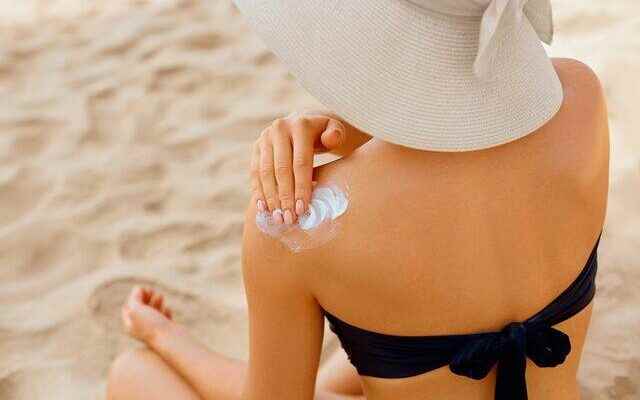Acıbadem Bakırköy Hospital Dermatology Specialist Dr. Belma Bayraktar “The sun’s rays, which are very necessary for living things to survive, have many beneficial and harmful effects. In addition to being an important source of vitamin D, the sun also has the feature of relaxing spiritually and curing some skin diseases. However, some harmful effects that are ignored in the society can cause irreparable damage. Early skin aging, blemishes, capillary enlargement, skin cancer development, cataract formation are the most well-known of these. For this reason, we must learn how to protect ourselves from the harmful effects of the sun without being damaged, and review the well-known mistakes. says.
5 WRONG FACTS ABOUT SUNBATHING!
5 misconceptions about sunbathing in society!
“A light tan before I go on vacation protects me from skin cancer”: FALSE!
ACTUALLY: Dermatology Specialist Dr. Belma Bayraktar “Tanning devices are much more harmful than the UV radiation we are exposed to outside. They emit 2-4 times more UV radiation than normal sunlight. This means more DNA damage and a higher risk of skin cancer by penetrating deeper into the skin. The light tan obtained with the tanning device only provides protection up to SPF 3-4. This is well below our recommended minimum SPF 30. In addition, we do not recommend tanning in any way, whether with the sun or with a solarium.” says.

No need for sun protection in cloudy weather and shade: WRONG!
ACTUALLY: Clouds do not block UV radiation as is thought. According to the World Health Organization, 80 percent of UV radiation reaches the earth through clouds. Therefore, it is necessary to use sunscreen in cloudy weather and in the shade. While it is thought that the sun’s rays are not harmful in our society when the sun’s rays are not vertical in the afternoon, this information does not reflect the truth. For this reason, it is necessary not to go out without taking precautions for protection from the sun and not to be exposed to the sun between 10-16, when the sun’s rays are intense.

“I’ve heard that 80 percent of UV exposure is under the age of 18. No need for sun protection after 50s”: FALSE!
ACTUALLY: 25 percent of UV exposure occurs under the age of 18. Skin cancer does not only develop in childhood, but also with the cumulative dose of UV radiation that we are exposed to throughout our life. The majority of non-melanoma skin cancers develop in areas that have been exposed to the sun for many years, such as the head and neck. For this reason, regardless of age, it is necessary to protect from the sun with sunscreen, hats and clothes.

Those with dark skin do not need protection from the sun: WRONG!
ACTUALLY: Skin cancers are common in Caucasians. While the sun protection effect (SPF) of black skin is 13.4 on average, it is 3.4 for white skin. UV radiation causes DNA damage in all skin types. In other words, no skin type is resistant to ultraviolet. Therefore, all skin types should be protected from the sun. When necessary precautions are taken to protect from the sun (not to be exposed to the sun between 10:00-16:00, not to perform outdoor activities during the hours when the sun’s rays are intense, to wear a wide-brimmed hat, to wear light-colored clothing, to wear UV-protective sunglasses), melanoma and non-melanoma skin cancer development can be prevented.
Sunscreens are harmful: FALSE!
ACTUALLY: Dermatology Specialist Dr. Belma Bayraktar said, “There are some reservations about sunscreens, which do not reflect the truth, especially about the fact that they are absorbed from the skin, mix with the bloodstream, damage the organs and have hormonal effects. In the studies conducted, no findings proving these were found. Itchy rashes may be encountered in those who are allergic to an ingredient in some sunscreens. says. Stating that despite the harmful rays of the sun, sunscreens that do not cause allergic effects should be applied to all exposed parts of the body, without leaving any gaps. Belma Bayraktar speaks: “With a practical recipe; For an average adult, 2-3 tablespoons for the body and 1-2 teaspoons for the face and neck are sufficient. It should be repeated after swimming and sweating. It can stay for eight hours without any activity. Sunscreen should be applied 15-20 minutes before coming into contact with water. Sunscreens are not recommended for babies younger than 6 months.
